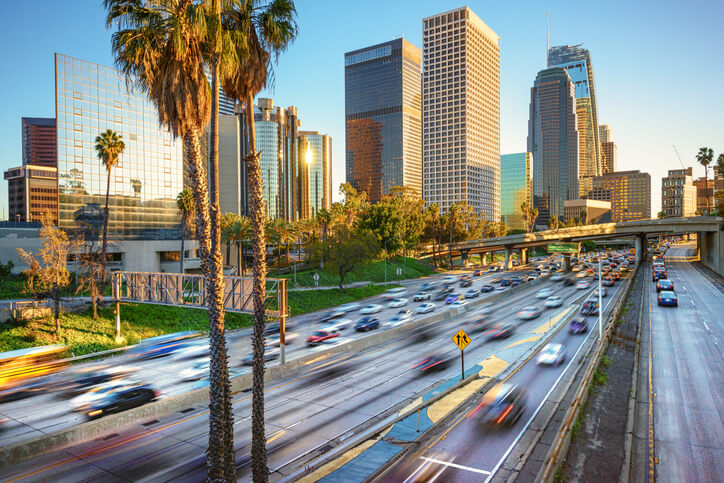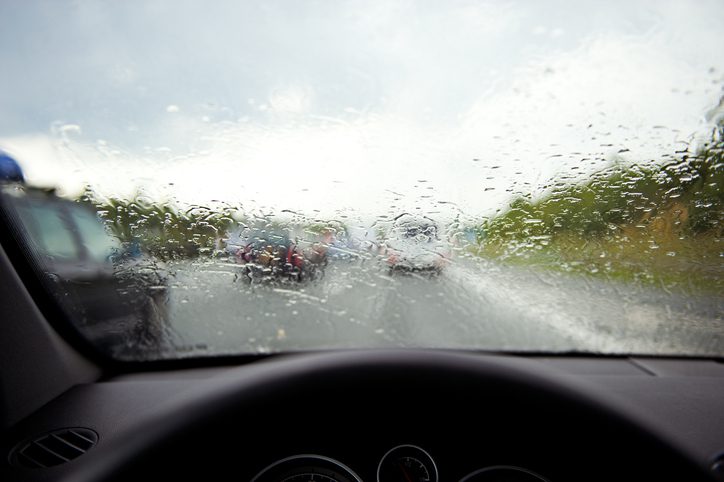Many drivers believe their behind-the-wheel skills smoothly shift between country and city driving. Your driver’s license and years of behind-the-wheel experience have prepared you to face the difficulties of any road—in theory. But, driving on city roads offers very different challenges compared to driving on country roads. For example, city roads may be well-maintained, but are often congested with vehicles, cyclists, pedestrians and other obstacles. Country roads may be poorly maintained, dark and very isolated.
Thankfully, you don’t necessarily need to take a driving course to get ready. (But, if you’re looking to rev up your skills behind the wheel, certain courses may grant you a car insurance discount!) Instead, a back-to-basics approach can help you build confidence behind the wheel, no matter where you’re headed.
Country vs. City Driving Statistics
City and country driving is very different and therefore, pose unique risks. But which area is more dangerous? Well, according to the National Highway Traffic Safety Administration:
- Although 20% of people in the U.S. live in rural areas, 41% of fatal traffic accidents occur there.
- 16% of crash deaths in rural areas occurred at intersections, compared to 32% in urban areas.
- Speeding fatalities occurred in almost equal proportions in both urban and rural areas. But, on roads with lower speed limits, speeding was more likely to be a factor in rural crash deaths.
- Since the early 2000s, motor vehicle crash deaths in urban areas has steadily increased while rural areas decreased.
Distracted Driving
The increase in technology has paralleled an increase in car crash fatality rates in recent years.
“I think listening to music and doing whatever we do that distracts us – and I include myself in this group – is the cause of many crashes,” said racing legend Johnny Unser, who is now a technical advisor for Cooper Tire and race director for Pro Mazda. “It’s important to keep both hands on the wheel and your vision on the road. About the time you take a quick peek at your smartphone a child could run in front of your car or a car in front of you could stop.”
As Unser indicated, the issue of distraction has moved beyond talking on telephones to voice controls, music options, email alerts, text messages, electronic maps and even social media. Those distractions are even more dangerous when drivers travel down unfamiliar roads or terrains.
7 Tips for Driving on Country Roads
It’s easy to zone out driving on flat, country roads with sparse scenery or traffic. And it’s dangerous. Many car crashes occur on high-speed rural roads—you know, those straightaways that seem to go on forever. If you’re headed to a country road, read through some of these tips:

1. Stay Focused
Force yourself to sit up straight, look ahead (not at a phone or radio) and watch for hazards, such as wildlife and pulled-over cars, says Takahashi.
2. Look Around
As you look ahead, keep your head “on a swivel,” recommends Takahashi. It’s vital to scan the front and sides of the road. Don’t forget, many country roads also have designated livestock crossings. That means that the road may be blocked so that animals can be herded across. Those that aren’t used to driving on country roads are often caught unaware and have to quickly brake to avoid hitting a stray animal. Stay aware of what is ahead of, to the side of, and behind your car.
3. Watch for “Blind” Drives
Those that primarily drive in city areas may forget that foliage, such as trees and shrubbery, can block the view of drivers exiting home driveways. In fact, AAA experts report that many rural drivers enter traffic “blindly,” without any warning of oncoming cars. Some homeowners do post ‘blind drive’ warning signs, but you shouldn’t count on these. Instead, swivel your head or lean forward if you have to watch for driveways.
4. Don’t Assume Wildlife Will Stop if They See Your Car’s Lights
Many people believe that deer and other wildlife will stop if they see the car’s headlights. That’s not always true, especially during rutting season, AAA experts report. Drive with caution, especially if there are animal crossing signs posted.
5. Double Check Your Car Emergency Kit
An emergency kit is especially crucial in rural areas where emergency responses are often slow, explains Deborah Trombley of the National Safety Council. AAA experts recommend these items for your kit:
- First aid supplies
- An ice scraper, snow brush or spray de-icer
- A shovel
- A bag of kitty litter or sand
- A flashlight
- Jumper cables
- Flares
- Blankets
- Hand warmers
- Food
- Water
It’s also a great idea to have an extra cell phone battery or a hand-held charger that doesn’t rely on external power.
6. Beware of “Rough” Roads
The potholes on city roads are often nothing compared to the jags, juts and bumps on country roads. Many rural areas purposely keep roads “rough,” with crushed stone and other materials, to slow traffic. Beware of major bumps and flying gravel.
7. Watch for “Quick-Stop” Areas
Are you driving out to the country to hike in a pristine area or enjoy a roadside stand? Chances are other drivers are doing the same thing. Drive slowly and prepare for vehicles to suddenly stop at these attractions.
Do you have a teen in your life who is learning to drive? Get expert tips and advice to help you prepare them, no matter the terrain. Download your free PDF guide developed by The Hartford’s corporate gerontologists today!
7 Tips for Driving on City Roads
There’s generally more maintenance on city roads than on rural roads. Emergency help usually responds faster in cities, too. But knowing these things can lead to a false sense of security. Consider these tips if you are headed to a city road:

1. Review Your Car Safety Equipment
There’s an old saying that automobile owners’ manuals are among the least read books. But, before you head off on your city adventures, take a look through the book to review how your blind spot warning system, adapted cruise control and other safety technologies work, advises Trombley. That’s doubly important in a rental car or other unfamiliar vehicles.
2. Take a Paper Map
Those used to driving in the suburbs or more rural areas may find themselves lost if a city’s tall buildings cause the GPS to fail. That’s not to say you shouldn’t use navigation. “If the car has navigation, use it,” says Takahashi. “It’s great to have [a virtual voice] in the car, telling you where to turn.” But, having a backup is a good idea, too.
3. Pay Attention at Intersections
To stay safe on unfamiliar roads, maintain a steady, reasonable speed and take extra caution when turning at intersections. Takahashi recommends trying to catch the eye of an oncoming driver to see if they plan to slow or stop to let you through. If the driver is staring ahead, assume they haven’t seen you and won’t stop.
4. Allow Other Drivers to Merge
“Be polite,” urges Takahashi. “Slow down and let people merge into traffic. You won’t save time if you block someone out and that [causes] an accident.”
5. Remember Safety at Rest Stops and in Parking Lots
“If you are going to pull off at a rest stop to either get your wits about you or use the restroom, make sure to do so safely,” says Alyse Ainsworth member of A Secure Life’s team, which is company dedicated to research in the security industry. “Remain alert and take note of the rest stop’s location or name in case of an emergency. Make sure to park in an easily seen area that is well lit.” And, of course, when you park, don’t leave your valuables in sight. Before you head out for your trip, familiarize yourself with the rules and regulations of driving in that area. And wherever you’re driving, pay attention. All roads have the potential to be dangerous, especially if they’re new to you.
6. Buy or Rent a Car That Suits the Area
If you’re thinking about renting a car for your trip, select a car that is small and will fit down crowded streets and into tight parking spaces. An oversized SUV might feel comfy, but it’ll be tough to maneuver and park in a crowded city, reminds the experts at Edmunds.
7. Stay in Your Lane
Rapid-fire lane changes are standard in cities. Many drivers realize they only save them a few seconds and boost their chance of a crash. When driving on city roads and highways, stay in your lane, recommends Edmunds’ experts.
Driving Safely Wherever You Go
It’s always important to take caution when driving, but it’s especially so in unfamiliar areas. Statistics show that doing otherwise can cause crashes that are often tragic. Being prepared can help keep you and your passengers safe.







Very helpful info for any road trip for old or new drivers
It is always good and helpful to be reminded of safety on the road. We always need refresher courses to keep these things in the forefront of our minds.
Very helpful article.
Very informative. Brought out the little things that are often overlooked when driving on unfamiliar roads. Thank you.
This is the best presentation I have ever read or seen.
Good information